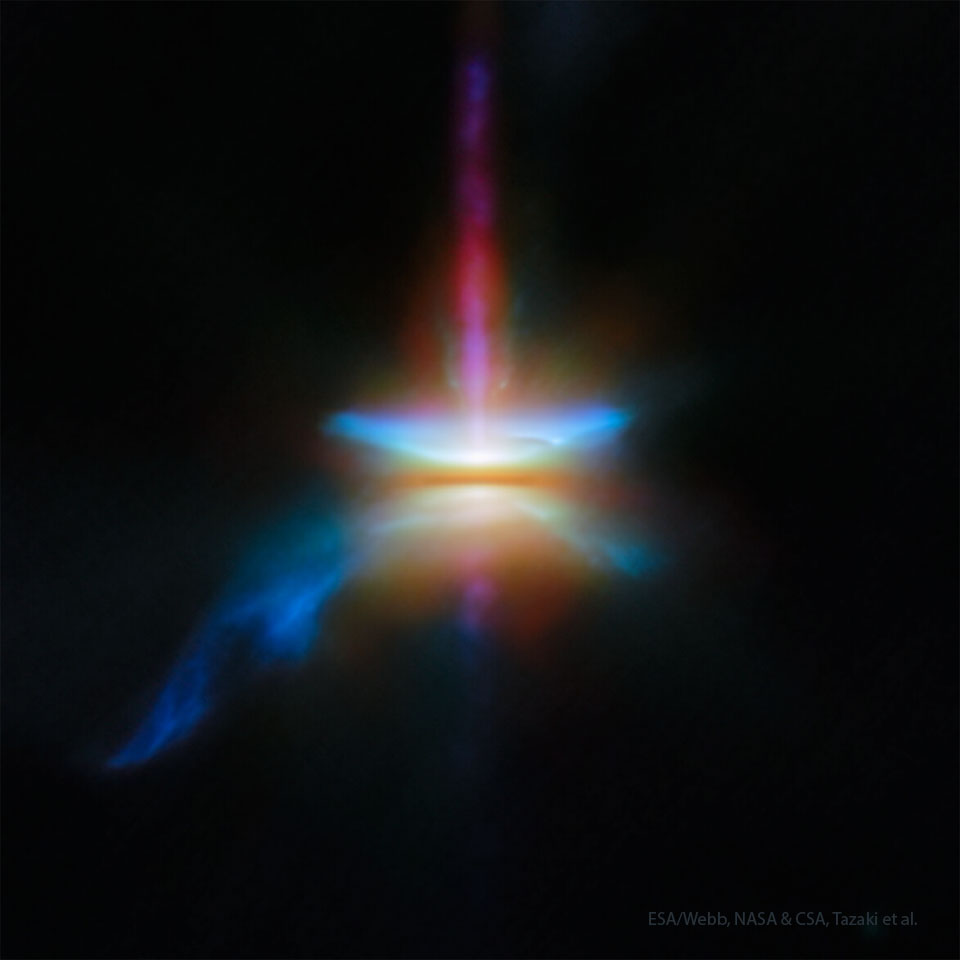Ways4eu WordPress.com Blog
SPA View of ways4eu.wordpress.com
Cosmic Chronicles: Dust Bunnies of the Universe and How They Become Planets
By JohnTheWordWhirlwind
on Wed Feb 19 2025
Today, we’re embarking on a fascinating journey through the cosmos to explore the captivating process of how stars and planets are born. Let’s dive into the intriguing world of Herbig-Haro 30, a protoplanetary system that’s revealing the secrets of celestial creation.
The Cosmic Art Gallery
Imagine a cosmic art gallery where the James Webb Space Telescope, Hubble Space Telescope, and the ground-based ALMA telescope collaborate to uncover the birth of celestial bodies. Together, they’ve exposed the mysteries of how those glittering orbs in our sky came to be—spoiler alert: it all starts with dust!
The Formation Process
The journey begins with massive clouds of gas and dust, akin to a cosmic version of a messy teenager’s bedroom. But here’s the twist: recent research reveals that in HH 30, it’s not the small dust particles that steal the show. Instead, larger dust grains cluster together to form a central protoplanetary disk, essentially a cosmic assembly line for planet production.
A Closer Look at HH 30
- Jets of particles: If you gaze at the stunning James Webb Space Telescope images, you’ll spot jets of particles shooting out like cosmic fireworks, displayed in striking red hues.
- Dust-rich disk: At the heart of the system lies a vast, dust-rich disk, often shrouding the young star(s) at its center and giving it a mysterious, moody appearance.
- Blue-reflecting dust: Don’t miss the blue-reflecting dust forming parabolic arcs around the disk. This cosmic feature remains a puzzle, leaving astronomers and stargazers alike to ponder its origins.
Why It Matters
Studying HH 30 isn’t just about cosmic voyeurism; it provides critical insights into planet formation, including the birth of our own Earth. By exploring the origins of planetary systems, scientists can piece together the roadmap of how our solar system—and others like it—came to be.
The Bigger Picture
Next time you gaze at the starry sky, remember: each twinkling light represents a remarkable journey from dust bunnies to the wondrous planets we know today. Even the most breathtaking cosmic formations began as something unglamorous—much like the messy room you’ve been meaning to clean!
So, channel your inner astronomer and marvel at the cosmos, one speck of dust at a time! 🌠✨
Image via NASA https://ift.tt/vJhM0F5
